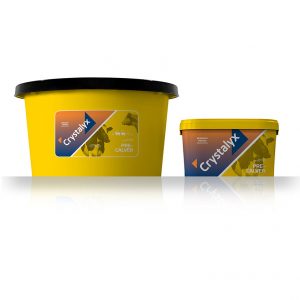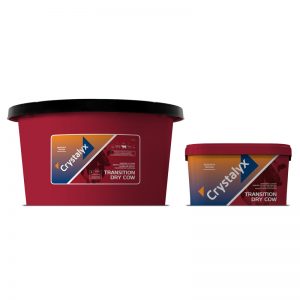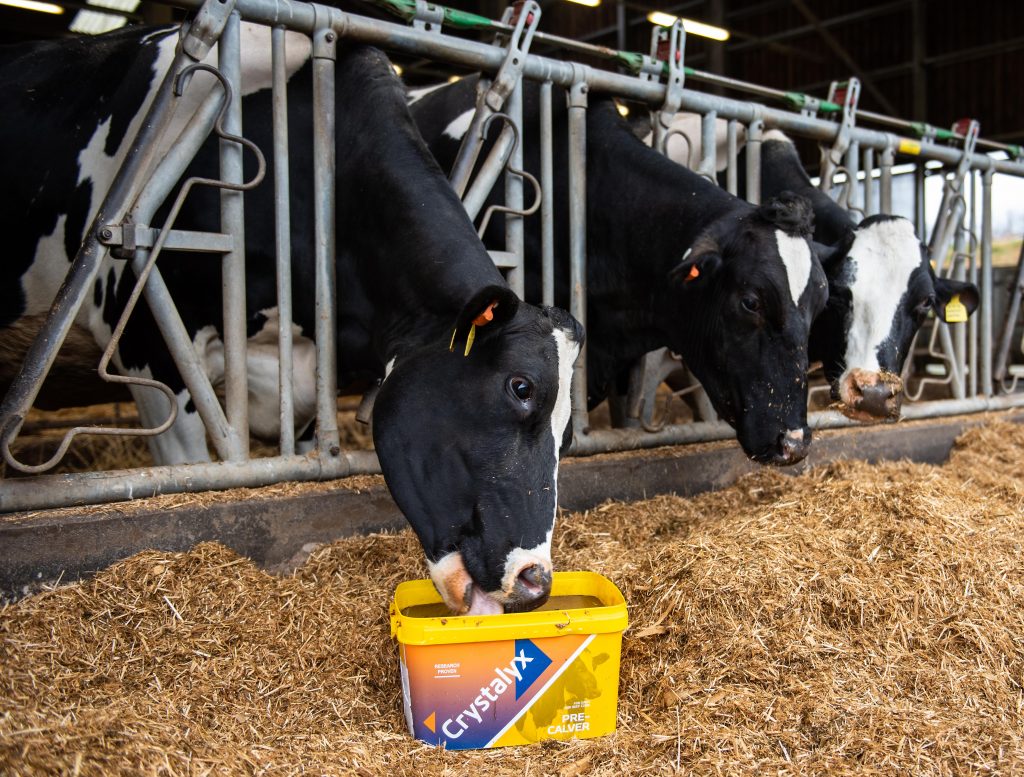Having access to the correct nutrition is never more important than in the lead up to calving. Here we consider the suitability of a cattle mineral block in achieving this efficiently and effectively.
For any beef or dairy system – calving health, calving ease, calf ‘get-up-and-go’, and colostrum and milk production – hinges on effective dry cow nutrition. Doing this profitably, depends on the efficiency of the nutritional strategies chosen. Think of the transition period as the foundation of future performance.
If we don’t get this small window of opportunity right, calves will struggle to get going in early life and cows will struggle to get going in early lactation. And the impacts can be far-reaching into later life and later lactation. The well-known financial and labour implications makes dry cow management one of the most talked-about subjects in the ruminant sector.
Core Challenge 1: Energy and ketosis
Cows that calve over-conditioned are predisposed to losing greater amounts of condition in early lactation. Cows that calve underconditioned do not have sufficient reserves for colostrum production, milk production, and her fertility is often negatively impacted. Management of body condition scores (BCS) is critical and shouldn’t be done solely in the dry period. Any corrections should be carried out in late lactation, with BCS maintained in the dry period.
In the last 6-8 weeks of pregnancy, the unborn calf doubles in size, reducing the capacity for the rumen. This ultimately means that as a cow gets closer to calving, her appetite and dry matter intakes drop off. This happens at a critical point when she needs energy for producing energy-rich colostrum and then large quantities of milk. Hormonal changes around parturition further compound the reduction in appetite.
This force of nature can create a negative energy balance, where the cow will use her energy reserves to birth and nurture her calf. This is why having cows in correct body condition with adequate nutrient reserves is so vital in reducing the risk of ketosis. So too is ensuring the freshly-calved cow has access to a high-energy diet and water immediately after calving.
A cattle mineral block or feed lick can play a key role in increasing rumen turnover, and therefore, forage intake. The high levels of sugar from molasses stimulates rumen bugs to digest fibre quicker, and thus stimulating appetite for more. Providing the energy density of the forage is appropriate (e.g. silage and straw mix), this will maintain a full and well-stretched rumen. This will give the capability to consume greater quantities of dry matter post-calving.
Core challenge 2: Calcium and milk fever
If a dry cows’ calcium reserves are too low, she may develop milk fever. On the other hand, dry cows that consume too much calcium will enter their next lactation with a reduced capability to release calcium from their own internal stores (bone and soft tissue). Hypocalcaemia is a classic problem in dry cows fed high quantities of green forage that is low in magnesium. Additionally, excessive potassium intakes put the cow into a state of mild metabolic alkalosis (a condition in which the body’s pH is too high and the blood is too alkaline) which does not encourage the uptake of calcium.
Magnesium helps to regulate the parathyroid hormone (PTH), which is critical for the cow to mobilise calcium from its bones and intestines to maintain proper blood calcium levels. If cows have milk fever, any intravenous calcium treatments will be less effective, or even ineffective, if they are too suffering with a degree of hypocalcaemia. Sub-clinical milk fever is often difficult to spot, but can still have significant impacts on health and productivity
With this, a cattle mineral block should supply magnesium as opposed to calcium. 14 grams of additional magnesium per head per day is recommended, topping up supplies from forage to exceed the target requirement of 20g/head/day. High-yielding dairy cows will likely need additional magnesium to reach 0.4% dry matter. Two sources of highly bioavailable magnesium will help ensure a sustained supply to the cow.
Core challenge 3: Micronutrients and immunity
There’s upwards of 14 micronutrients – including selenium, zinc, cobalt, and vitamins – required for digestive, immune, and reproductive function. A deficiency in any one of these can have a major impact on metabolic processes. This can manifest into some serious metabolic disorders such as ketosis, retained cleansings, metritis, mastitis, and respiratory challenge, for example.
A cattle mineral block should offer a full complement of minerals, vitamins and trace elements to settle immediate needs and build reserves for the cow and unborn calf. Be sure to look out for the bioavailability to ensure they are absorbed within the animal, rather than passed through!
What You Need To Know About Cattle Mineral Blocks and Feed Licks
All cattle mineral blocks/feed licks promise to stimulate forage intakes and digestibility while also providing the necessary energy, minerals, trace elements and vitamins. But not all cattle mineral blocks are made equal.
Crystalyx uses a unique manufacturing process to create a highly palatable feed lick with just 2-3% moisture. This uniquely controls intakes to a level needed by livestock to convert forage faster and increase intakes – without the risk of over-eating AND without the risk of depletion in adverse weathers. Every lick is packed with required energy, minerals, vitamins and trace elements to balance forage and power performance.
Reducing Milk Fever and Slow Calving’s in dairy and beef cattle

Crystalyx Pre-Calver feed licks contain a unique combination of magnesium salts that optimises uptake and availability within the cow to reduce the risk of milk fever and slow calving’s in both beef cattle and dairy cows. The presence of sodium also helps to reduce the antagonism to magnesium availability caused by high forage potassium levels.
- Research carried out in New Zealand showed that dairy cows with access to Crystalyx Pre-Calver had ‘significantly reduced’ incidences of milk fever, mastitis, and retained placenta’s. Milk fever cases also reduced.
- Research carried out at the University or Parma has evidenced Crystalyx Pre-Calver to substantially increase colostrum yield, resulting in an increase in IgG levels overall. A 14% increase in milk yield was also recorded over the first 100 days.
Meeting the Needs of High Performance Dairy Dry Cows

As cows transition (in the last 2 weeks of the dry period and the first 2 weeks of lactation), Crystalyx Transition Dry Cow corrects and balances any nutritional deficits present in a forage-based diet. Minerals, vitamins and trace elements are supplied set to the latest NASEM guidelines. Specifically, a palatable combination of magnesium sources to help maintain normal blood magnesium levels.
Crystalyx Transition Dry Cow is designed to:
- Helps maintain normal blood magnesium and calcium levels
- Significantly reduces both the incidence and severity of milk fever at calving
- Significantly reduces the incidence of mastitis in early lactation
- More than doubles colostrum and colostrum IgG yield at calving to give the calf the best possible start to life
- Improves forage intakes immediately pre-calving to optimise appetite in early lactation so cows transition faster and easier into lactation (see earlier point in section ‘Challenge 1: Energy and ketosis’.
Don’t miss any important future updates!
Join our mailing list for our latest news and current offers.


